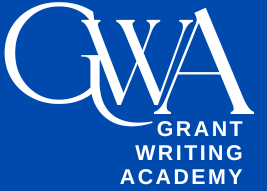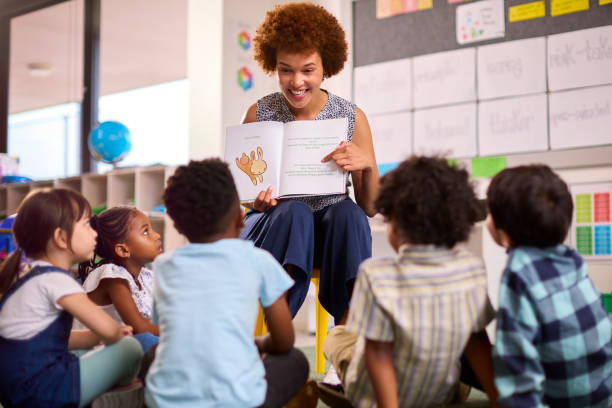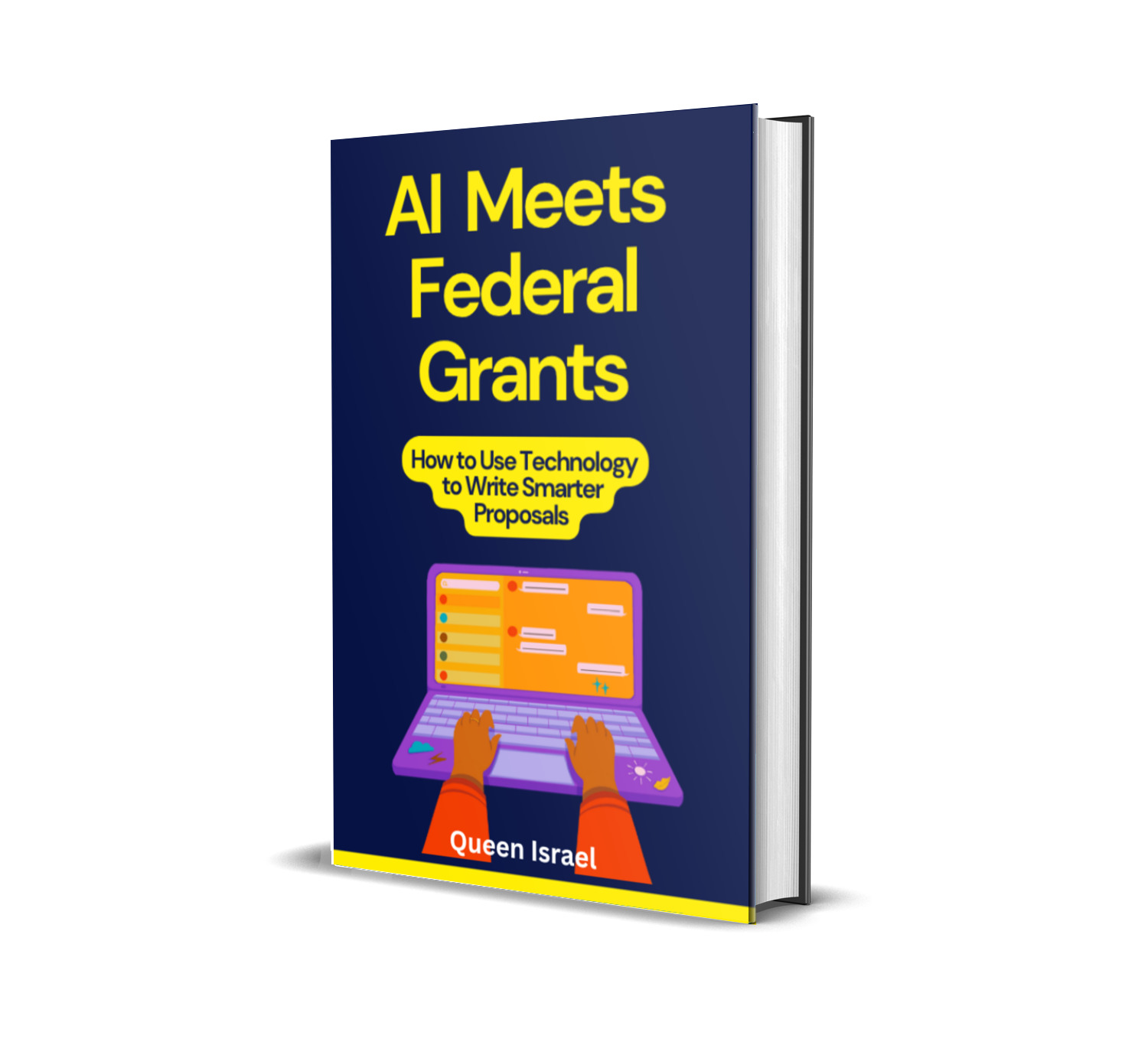In today’s fast-paced, ever-evolving world, literacy grant ideas are more crucial than ever. Literacy is more than just the ability to read and write; it’s the foundation for success in education, employment, and personal empowerment.
Literacy programs are essential for helping individuals improve their communication skills, increase their employability, and build confidence. But securing the necessary funding to support these programs can be a challenge for nonprofit organizations, educators, and community groups.
That’s where literacy grant ideas come into play.
If you’re considering applying for a literacy grant, you’re already on the right path toward making a difference in your community. There are various funding opportunities available, each focusing on a different aspect of literacy—whether it’s childhood literacy, adult education, or innovative methods to enhance learning.
In this article, we’ll explore literacy grant ideas that can help you secure the funding needed to launch or sustain your literacy programs. Plus, we’ll share insights, data, and tips on how to maximize your chances of winning a grant.
Why Literacy Matters: The Need for Support
Before diving into grant ideas, let’s take a moment to understand why literacy is so crucial. According to the National Center for Education Statistics (NCES), over 21% of adults in the United States fall below the level of functional literacy.
This means they may struggle with tasks like reading a bus schedule, following written instructions, or understanding health information—tasks that many of us take for granted. Lack of literacy skills can result in lower employment rates, poor health outcomes, and limited economic opportunities.
For children, early literacy skills are critical to success in school and life. Research shows that children who can read by the end of third grade are more likely to graduate from high school and pursue higher education. Sadly, according to Reading Rockets, nearly one in four children in the United States struggles with reading.
These statistics highlight the need for literacy grants that can fund initiatives focused on improving reading, writing, and critical thinking skills. Let’s take a closer look at some innovative literacy grant ideas to address this issue.
1. Grants for Early Literacy Programs
When it comes to improving literacy, focusing on early childhood is key. Grants for early literacy programs are designed to help children from birth to eight years old develop the skills they need for future success. These programs can range from preschool literacy initiatives to summer reading camps and family literacy events.
Expanding Early Literacy Initiatives
Early literacy programs are foundational in shaping a child’s educational journey. Grants in this area can support a variety of activities, including:
- Storytime Sessions: Regularly scheduled story readings in libraries or community centers to foster a love of books.
- Parent-Child Literacy Workshops: Sessions that educate parents on how to support their children’s reading development at home.
- Literacy-Rich Environments: Creating spaces filled with books, educational games, and interactive learning tools that encourage reading and exploration.
Example: The Laura Bush Foundation for America’s Libraries offers grants to U.S. public libraries, especially those serving underprivileged children, to provide books and programs that encourage a love of reading. These grants aim to increase access to high-quality books and resources in communities with limited educational opportunities.
Another great resource is The Dollar General Literacy Foundation, which funds programs that provide early childhood literacy and adult literacy education. Their focus is on improving the literacy of youth and adults in rural communities, often partnering with libraries, schools, and nonprofit organizations.
Success Story: Reading Partners
Reading Partners is a national nonprofit that uses grant funding to provide one-on-one tutoring for students in underserved communities. With the help of grants, Reading Partners has expanded its reach to over 1,500 schools, impacting more than 500,000 students. Their data-driven approach ensures that every tutoring session is tailored to the individual needs of each child, resulting in significant improvements in reading scores.
Tips for Securing Early Literacy Grants:
- Focus on improving reading skills among children under the age of 8.
- Showcase how your program can have a long-term impact on students’ educational outcomes.
- Offer data-driven results, such as test scores or reading assessments, to demonstrate the effectiveness of your program.
- Include testimonials from parents, teachers, and students who have benefited from your program.
- Provide a detailed budget outlining how the grant funds will be utilized to maximize transparency and trust with funders.
2. Grants for Adult Literacy and Education
Adult literacy is another vital area where funding is necessary. Adult learners often struggle to acquire basic literacy skills due to factors like poverty, limited access to education, and language barriers. Grants for adult literacy programs aim to help these individuals improve their reading, writing, and comprehension skills, ultimately enhancing their employability and quality of life.
Expanding Adult Literacy Programs
Adult literacy programs can encompass a variety of services, including:
- Basic Literacy Classes: Teaching fundamental reading and writing skills.
- ESL (English as a Second Language) Programs: Helping non-native speakers improve their English proficiency.
- Workforce Development: Providing literacy training tailored to specific job requirements, such as resume writing or workplace communication.
- Digital Literacy: Teaching adults how to use computers and the internet to enhance their job prospects and daily lives.
Example: The National Literacy Foundation (NLF) funds adult literacy programs nationwide. NLF is particularly interested in innovative programs that help adults transition into higher education or gain workforce skills.
The Kresge Foundation also offers grants for adult literacy programs, especially those that integrate technology and online learning into their teaching strategies. This funding focuses on community-based adult literacy initiatives that address the specific needs of diverse populations.
Success Story: ProLiteracy
ProLiteracy is a leading nonprofit organization dedicated to adult literacy. Through grant funding, ProLiteracy has developed a network of adult education providers who deliver personalized literacy instruction. Their programs have helped over a million adults achieve higher literacy levels, leading to better job opportunities and improved self-confidence.
Tips for Securing Adult Literacy Grants:
- Highlight how your program empowers adults to pursue higher education or gain employment.
- Focus on underrepresented communities, such as low-income adults, immigrants, or people with disabilities.
- Show the positive impact of your program on participants’ lives, such as improved literacy skills or better job prospects.
- Incorporate success metrics, such as graduation rates, employment rates post-program, and participant testimonials.
- Demonstrate partnerships with local businesses, educational institutions, or community organizations to strengthen your proposal.
3. Grants for Innovative Literacy Approaches
In addition to traditional literacy programs, there are also opportunities to apply for grants that fund innovative literacy approaches. This could include programs that use technology, storytelling, project-based learning, or even arts-based education to engage students in learning to read and write.
Exploring Innovative Literacy Solutions
Innovative literacy programs break the mold by using creative methods to engage learners. Examples include:
- Gamified Learning: Incorporating game elements into reading and writing activities to make learning fun and interactive.
- Mobile Literacy Apps: Developing applications that provide accessible literacy resources and exercises on smartphones and tablets.
- Storytelling and Creative Writing Workshops: Encouraging creativity through narrative exercises and writing projects.
- Interdisciplinary Approaches: Combining literacy with other subjects like science, history, or art to provide a more holistic learning experience.
Example: The Bill & Melinda Gates Foundation is a leader in funding innovative literacy solutions. They focus on projects that use technology to improve education and provide open educational resources to teachers and learners. Their goal is to enhance literacy outcomes in developing countries and low-income communities through digital tools.
Another funding opportunity comes from the Newman’s Own Foundation, which supports innovative programs that focus on improving literacy and educational access for underserved populations.
Their funding priorities include multilingual literacy programs and those that combine reading with digital literacy.
Success Story: TeachTown
TeachTown uses technology to deliver individualized literacy instruction to students with special needs. By integrating adaptive learning software and personalized teaching strategies, TeachTown has improved reading outcomes for thousands of students. Grant funding has allowed TeachTown to continuously innovate and expand its reach, providing support to more schools and districts.
Tips for Securing Grants for Innovative Literacy Approaches:
- Emphasize creativity in your program design. How does your program approach literacy in a unique way?
- Focus on scalability—how will your innovative approach impact a large number of people or communities?
- Showcase evidence of success, such as testimonials, case studies, or data that prove the effectiveness of your innovative methods.
- Detail the innovation: Clearly explain what makes your approach different and why it’s more effective than traditional methods.
- Include pilot data or preliminary results if available, to demonstrate the potential impact of your innovative approach.
4. Grants for Literacy and Technology Integration
With the rise of digital learning tools, literacy and technology integration is a growing focus for funders. Many literacy programs now incorporate educational apps, online tutoring, and interactive websites to enhance learning outcomes. Grants for literacy and technology integration support programs that integrate digital tools into their literacy initiatives, allowing students to access resources and improve their reading skills.
Integrating Technology into Literacy Programs
Technology can revolutionize how literacy is taught and learned. Here are some ways technology can be integrated into literacy programs:
- E-Books and Digital Libraries: Providing access to a vast array of digital books that can be easily accessed by learners.
- Interactive Learning Platforms: Utilizing platforms that offer interactive exercises, quizzes, and feedback to enhance learning.
- Virtual Classrooms: Enabling remote learning opportunities for individuals who may not be able to attend in-person classes.
- Adaptive Learning Software: Software that adjusts the difficulty of tasks based on the learner’s progress, ensuring personalized learning experiences.
Example: The U.S. Department of Education offers the Innovative Approaches to Literacy Program, which funds projects that integrate technology into literacy programs for K-12 students, particularly in high-need schools. This program aims to ensure that students in underserved communities have access to high-quality educational tools, including digital literacy resources.
Additionally, The Verizon Foundation funds programs that combine technology and literacy to improve learning outcomes for children and adults. Their focus is on programs that address the digital divide and provide access to technology in low-income areas.
Success Story: Khan Academy
Khan Academy offers free online literacy resources that are accessible to anyone with an internet connection. By providing video tutorials, interactive exercises, and personalized learning dashboards, Khan Academy has empowered millions of learners worldwide to improve their literacy skills at their own pace. Grant funding has been instrumental in expanding their resources and ensuring their platform remains free and accessible.
Tips for Securing Technology Integration Grants:
- Focus on how your program uses technology to enhance the learning experience.
- Demonstrate how your program addresses the digital divide and ensures access to online learning resources for underserved communities.
- Provide data on the effectiveness of technology in improving literacy skills.
- Highlight any partnerships with tech companies or educational platforms that can strengthen your proposal.
- Detail the sustainability of your technology solutions—how will you maintain and update the digital tools over time?
5. Grants for Community-Based Literacy Programs
Community-based literacy programs are essential for providing support where it’s needed most. Whether it’s a local library offering reading clubs, a nonprofit providing adult education classes, or a community center hosting literacy workshops, these programs play a critical role in improving literacy outcomes for diverse populations.
Strengthening Communities Through Literacy
Community-based programs leverage local resources and networks to create tailored literacy solutions. Here are some approaches:
- Mobile Literacy Units: Bringing literacy resources and classes directly to neighborhoods that lack access to traditional educational facilities.
- Volunteer-Led Tutoring: Engaging community members as volunteers to provide personalized literacy support.
- Culturally Relevant Materials: Using reading materials that reflect the cultural backgrounds and experiences of the community members.
- Collaborative Partnerships: Working with local businesses, schools, and other organizations to create a support network for literacy initiatives.
Example: The W.K. Kellogg Foundation is one of the prominent funders of community-based literacy initiatives, particularly those that focus on families and children in vulnerable communities. Their funding supports programs that emphasize family literacy and community engagement.
The E. Rhodes and Leona B. Carpenter Foundation also offers grants to community-based literacy programs, particularly those that provide services to youth and low-income families.
Success Story: Book Trust
Book Trust partners with community centers and libraries to create literacy programs that are accessible to all members of the community. Their initiatives include mobile libraries, reading mentorship programs, and community book fairs. With grant support, Book Trust has been able to reach over 100,000 individuals, fostering a love for reading and improving literacy rates across various communities.
Tips for Securing Community-Based Literacy Grants:
- Focus on the community impact of your literacy program—how does it benefit local families and children?
- Showcase how your program addresses community needs, such as poverty, immigration, or unemployment.
- Use qualitative and quantitative data to demonstrate the effectiveness of your program in improving literacy in the community.
- Highlight community partnerships and collaborations that enhance your program’s reach and effectiveness.
- Provide case studies or success stories that illustrate the positive changes your program has brought to the community.
6. Grants for Literacy Research and Evaluation
Understanding what works in literacy education is essential for developing effective programs. Grants for literacy research and evaluation support studies that explore new methods, assess existing programs, and provide data-driven insights to improve literacy outcomes.
Advancing Literacy Through Research
Research grants can fund various types of studies, including:
- Program Evaluation: Assessing the effectiveness of existing literacy programs to identify strengths and areas for improvement.
- Curriculum Development: Creating and testing new literacy curricula that incorporate the latest educational theories and practices.
- Impact Studies: Investigating the long-term effects of literacy programs on participants’ lives, such as employment rates and educational attainment.
- Innovative Methodologies: Exploring new approaches to literacy education, such as gamification, blended learning, or immersive storytelling.
Example: The Spencer Foundation offers grants for research that aims to improve educational outcomes, including literacy. They support projects that provide rigorous, evidence-based insights into effective literacy teaching practices and program implementations.
The Institute of Education Sciences (IES), part of the U.S. Department of Education, provides funding for research that explores the most effective ways to teach literacy skills to diverse populations.
Success Story: Literacy Research Consortium
The Literacy Research Consortium conducts comprehensive studies on the efficacy of different literacy programs. Their research has informed best practices in literacy education, leading to the development of more effective teaching strategies and curriculum designs. Grant funding has enabled them to collaborate with educational institutions and policymakers to implement research findings on a broader scale.
Tips for Securing Literacy Research Grants:
- Clearly define your research objectives and how they will contribute to the field of literacy education.
- Ensure your research methodology is robust and can provide reliable, valid results.
- Highlight the potential impact of your research on literacy programs and policies.
- Collaborate with academic institutions or other research organizations to strengthen your proposal.
- Provide a detailed plan for disseminating your research findings to ensure they reach educators, policymakers, and other stakeholders.
7. Grants for Literacy Advocacy and Policy Development
Advocacy plays a crucial role in shaping policies that support literacy education. Grants for literacy advocacy and policy development fund initiatives that aim to influence legislation, raise public awareness, and create systemic changes to improve literacy rates.
Advocating for Literacy
Advocacy grants support activities such as:
- Policy Research and Analysis: Conducting studies to inform policymakers about the importance of literacy education and the effectiveness of different approaches.
- Public Awareness Campaigns: Creating campaigns to highlight the importance of literacy and mobilize community support for literacy initiatives.
- Legislative Advocacy: Working with legislators to draft and promote policies that support literacy education funding and programs.
- Coalition Building: Forming alliances with other organizations and stakeholders to amplify advocacy efforts and create a unified voice for literacy.
Example: The Bill & Melinda Gates Foundation not only funds literacy programs but also invests in advocacy efforts to influence educational policies that support literacy initiatives across the nation.
The American Federation of Teachers (AFT) provides grants for advocacy projects that aim to improve literacy education standards and policies at the state and national levels.
Success Story: National Literacy Policy Alliance
The National Literacy Policy Alliance uses grant funding to advocate for comprehensive literacy policies that address the root causes of illiteracy. Their initiatives include lobbying for increased funding for literacy programs, conducting public awareness campaigns, and providing training for advocates to effectively communicate the importance of literacy to policymakers and the public.
Tips for Securing Advocacy and Policy Grants:
- Clearly articulate the policy changes you are seeking and how they will improve literacy outcomes.
- Demonstrate a deep understanding of the current policy landscape and identify gaps that your advocacy efforts will address.
- Highlight your organization’s expertise and experience in advocacy and policy development.
- Provide a strategic plan outlining how you will achieve your advocacy goals, including timelines, key activities, and measurable objectives.
- Showcase partnerships with other advocacy groups, educational institutions, and community organizations to strengthen your proposal.
8. Grants for Multilingual and Culturally Responsive Literacy Programs
In our increasingly diverse society, literacy programs must cater to learners from various linguistic and cultural backgrounds. Grants for multilingual and culturally responsive literacy programs support initiatives that provide literacy education in multiple languages and incorporate culturally relevant materials and teaching methods.
Embracing Diversity in Literacy Education
Multilingual and culturally responsive programs ensure that all learners, regardless of their background, have access to effective literacy education. These programs can include:
- Bilingual Education Programs: Teaching literacy in both the learner’s native language and the dominant language of the community.
- Culturally Relevant Curriculum: Developing reading materials and teaching methods that reflect the cultural backgrounds and experiences of the learners.
- Language Preservation Initiatives: Supporting literacy programs that aim to preserve and promote indigenous or minority languages.
- Community Language Classes: Offering literacy classes in various languages to accommodate non-English speakers in the community.
Example: The Multilingual Education Program (MEP) offers grants to organizations that develop and implement literacy programs in multiple languages. Their focus is on supporting immigrant communities and ensuring that language barriers do not impede access to education.
The Ford Foundation funds programs that promote linguistic diversity and support multilingual education, recognizing the importance of maintaining cultural heritage through language.
Success Story: Dual Language Literacy Initiative
The Dual Language Literacy Initiative provides grants to schools and community organizations to develop dual language literacy programs. These programs offer instruction in both English and Spanish, allowing students to become proficient in both languages while enhancing their literacy skills. Grant funding has enabled these initiatives to expand, reaching thousands of bilingual students and fostering a more inclusive educational environment.
Tips for Securing Multilingual and Culturally Responsive Grants:
- Highlight the linguistic and cultural diversity of your target population and how your program addresses their specific needs.
- Showcase the expertise of your staff in working with multilingual learners and culturally diverse groups.
- Provide examples of culturally relevant materials and teaching methods that will be used in your program.
- Demonstrate the broader community impact, such as improved integration, cultural preservation, and enhanced communication skills among participants.
- Include plans for assessing the effectiveness of your multilingual and culturally responsive approaches, using both qualitative and quantitative data.
9. Grants for Literacy in Underserved and Rural Communities
Underserved and rural communities often face unique challenges in accessing quality literacy education. Grants for literacy in underserved and rural communities aim to bridge the gap by providing resources, programs, and support tailored to these areas.
Addressing the Needs of Underserved and Rural Communities
Literacy programs in underserved and rural areas can address issues such as:
- Limited Access to Educational Resources: Providing books, digital tools, and learning materials where they are scarce.
- Geographical Barriers: Implementing mobile literacy units or online programs to reach remote populations.
- Economic Disparities: Offering free or low-cost literacy classes to individuals who cannot afford traditional education programs.
- Lack of Qualified Educators: Training local community members to become literacy tutors and educators.
Example: The Rural Literacy and Education Grants program, offered by various state education departments, provides funding to organizations that deliver literacy programs in rural areas. These grants support initiatives such as mobile libraries, community tutoring centers, and online literacy platforms.
The National Rural Education Association (NREA) offers grants specifically aimed at improving literacy education in rural schools, focusing on innovative solutions to overcome the challenges of distance and limited resources.
Success Story: Rural Reads Project
The Rural Reads Project utilizes grant funding to deploy mobile libraries equipped with a wide range of books and digital resources to remote villages. Additionally, they provide training for local volunteers to lead reading sessions and literacy workshops. This initiative has significantly increased literacy rates in rural areas, with over 10,000 individuals benefiting from the program annually.
Tips for Securing Grants for Underserved and Rural Communities:
- Clearly identify the specific challenges faced by the underserved or rural community you are targeting.
- Demonstrate how your program will overcome geographical and resource barriers to provide effective literacy education.
- Highlight any existing connections or partnerships with local organizations, schools, or community leaders.
- Provide a detailed plan for how you will reach and engage participants in these communities.
- Include data or research that underscores the need for literacy programs in the targeted underserved or rural areas.
10. Grants for Literacy and Special Education
Individuals with special needs often require tailored literacy programs that address their unique challenges. Grants for literacy and special education support initiatives that provide specialized instruction and resources for learners with disabilities, learning differences, or other special requirements.
Supporting Diverse Learning Needs
Specialized literacy programs can include:
- Individualized Education Plans (IEPs): Developing personalized literacy goals and strategies for each learner with special needs.
- Assistive Technology: Providing tools such as text-to-speech software, audiobooks, and specialized learning devices to aid in literacy education.
- Specialized Training for Educators: Offering professional development for teachers on best practices for teaching literacy to students with special needs.
- Inclusive Classroom Materials: Creating or sourcing reading materials that are accessible and engaging for learners with disabilities.
Example: The National Center for Learning Disabilities (NCLD) offers grants to organizations that develop and implement literacy programs for individuals with learning disabilities. Their focus is on creating inclusive educational environments that support diverse learning needs.
The Office of Special Education Programs (OSEP), part of the U.S. Department of Education, provides funding for projects that enhance the literacy skills of students with disabilities through innovative teaching methods and resources.
Success Story: Inclusive Literacy Initiative
The Inclusive Literacy Initiative uses grant funding to create classrooms that cater to students with a variety of learning needs. They employ specialized teaching strategies, such as multisensory learning techniques and adaptive technologies, to ensure that every student can achieve literacy success. This initiative has led to significant improvements in reading and writing skills among students with special needs, fostering a more inclusive and supportive educational environment.
Tips for Securing Literacy and Special Education Grants:
- Highlight the specific needs of the learners your program will serve and how your program addresses these needs.
- Demonstrate the expertise and training of your staff in working with individuals with special needs.
- Provide detailed descriptions of the specialized resources and teaching methods you will use.
- Include measurable outcomes that will demonstrate the effectiveness of your program in improving literacy skills for learners with special needs.
- Showcase any partnerships with special education experts, organizations, or institutions that can support your program.
Final Thoughts
No matter what type of literacy program you’re running, there are many grants available to help fund your efforts. Whether you’re focusing on early childhood education, adult literacy, technology integration, or community-based initiatives, there are funding opportunities out there to help you succeed.
To maximize your chances of securing a literacy grant, make sure your proposal is clear, impactful, and aligned with the funder’s mission. Also, ensure that you are continuously measuring and reporting on the success of your programs. This data will help you not only secure the grant but also demonstrate the long-term impact of your literacy efforts.
How to Increase Your Grant Success Rates
Securing a grant requires more than just a great idea; it demands strategic planning, clear communication, and a compelling narrative. Here are some additional tips to enhance your grant applications:
- Understand the Funder’s Priorities: Research potential funders to ensure your program aligns with their mission and funding priorities. Tailor your proposal to highlight how your initiative meets their specific goals.
- Develop a Strong Narrative: Tell a compelling story that explains the problem your program addresses, your solution, and the impact you expect to achieve. Use real-life examples and testimonials to bring your proposal to life.
- Create a Detailed Budget: Provide a clear and realistic budget that outlines how grant funds will be used. Include all necessary expenses and justify each line item to show funders that you have carefully planned your finances.
- Demonstrate Sustainability: Explain how your program will continue to operate and grow after the grant period ends. Funders are more likely to invest in projects that have a long-term vision and sustainable funding strategies.
- Include Measurable Outcomes: Define specific, measurable goals for your program and explain how you will track and evaluate your progress. Funders want to see that their investment will lead to tangible results.
- Collaborate with Partners: Building partnerships with other organizations, schools, or community groups can strengthen your proposal. It shows that you have a broad support network and can leverage additional resources to achieve your goals.
- Seek Feedback: Before submitting your proposal, seek feedback from colleagues, mentors, or grant writing professionals. They can provide valuable insights and help you refine your application.
- Stay Organized and Meet Deadlines: Keep track of grant application deadlines and ensure that all required materials are submitted on time. Late or incomplete applications are often disqualified.
Subscribe to Grant Writing Academy Newsletter
To stay ahead in the competitive world of grant writing and to continuously improve your grant writing skills, consider subscribing to the Grant Writing Academy Newsletter.
Our newsletter provides you with:
- Expert Tips: Learn the best practices for writing compelling grant proposals.
- Strategies: Discover effective strategies to increase your chances of securing funding.
- Templates: Access customizable templates for various sections of your grant application.
- Tools: Utilize essential tools that streamline the grant writing process.
- Success Stories: Gain inspiration from successful grant recipients and learn from their experiences.
By subscribing, you’ll gain access to valuable resources that can help you create winning proposals and launch successful literacy programs that make a lasting impact.
Don’t miss out on the opportunity to enhance your grant writing success rates—subscribe today!
Additional Resources and Support
a) Expand Your Knowledge
The grant writing field is always evolving. Keep learning and improving your skills to stay competitive.
Recommended Resources:
- Request for Proposal Success: How to Write Proposals That Win: Learn the techniques and strategies to create standout proposals.
- Tech Startup Funding Secrets: Navigating Grants for Maximum Growth: Perfect for those in the tech sector looking to leverage grants for scaling.
- Grant Proposal Guide for Environmental Projects: Tailored for environmental initiatives seeking to secure impactful funding.
- The Ultimate Guide to Federal Grant Applications: Techniques for Success: Master the complexities of federal grants with actionable insights.
Explore More Books Here
b) Invest in Expert Guidance
Join one of our mentorship programs for tailored advice and support:
Mentorship Programs:
- 3-Month Mentorship: The Foundation Builder: A short-term plan to refine your grant writing skills and win your first (or next) grant.
- 6-Month Mentorship: The Proposal Pro: Dive deeper into strategies, proposal reviews, and funding plans.
- 1-Year Mentorship: The Funding Champion: Build long-term success with comprehensive guidance, unlimited reviews, and exclusive resources.
C) Book a One-on-One Consultation
Sometimes you just need personalized advice to tackle challenges or fine-tune your strategy. Let’s work together to solve your unique grant writing challenges.
Book a Consultation Call Here
Sources & References:
- National Center for Education Statistics (NCES) – Literacy Statistics
- Reading Rockets – Early Literacy Stats
- Laura Bush Foundation for America’s Libraries – Grant Information
- The Dollar General Literacy Foundation – Early Childhood Literacy Grants
- U.S. Department of Education – Innovative Approaches to Literacy Program
- The Verizon Foundation – Grants for Technology and Literacy
- ProLiteracy – Adult Literacy Programs
- Kresge Foundation – Adult Literacy Grants
- Spencer Foundation – Educational Research Grants
- National Literacy Policy Alliance – Policy Advocacy
- Multilingual Education Program (MEP) – Language Diversity Grants
- National Rural Education Association (NREA) – Rural Literacy Grants
- National Center for Learning Disabilities (NCLD) – Special Education Grants
- Office of Special Education Programs (OSEP) – Special Education Funding
- Bill & Melinda Gates Foundation – Literacy and Education Grants
- Newman’s Own Foundation – Educational Access Grants
- W.K. Kellogg Foundation – Community Literacy Grants
- E. Rhodes and Leona B. Carpenter Foundation – Youth and Family Grants
By leveraging these literacy grant ideas and utilizing the resources provided by the Grant Writing Academy, you can secure the funding needed to transform literacy education in your community.
Start your journey today and make a lasting impact through effective, well-funded literacy programs.





